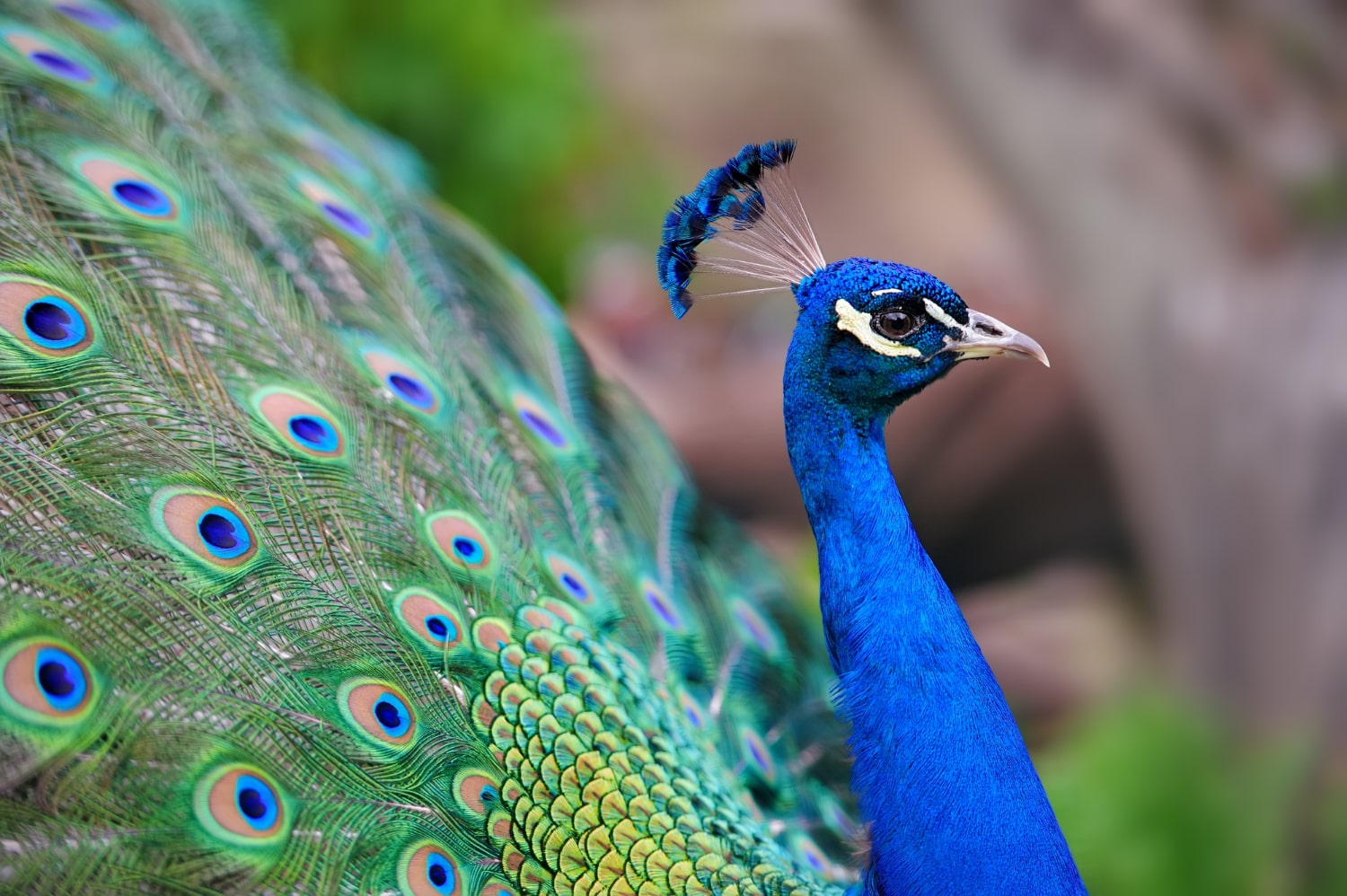Peacocks are among the most beautiful and recognizable birds in the world. For centuries, they have fascinated people with their majestic appearance, graceful movements, and luxurious plumage. Their feathers shimmer in sunlight with a spectrum of colors, resembling living jewels of nature. In many cultures, the peacock symbolizes beauty, pride, and nobility. Below are interesting and informative facts about these extraordinary birds that you may not have known.
- Peacocks belong to the pheasant family and are the largest members of it. They have strong bodies, long legs, and impressively long tail feathers that often exceed the length of their bodies. An adult male typically weighs between five and six kilograms.
- There are only three species of peafowl in nature: the Indian peafowl, the green peafowl, and the Congo peafowl. The Indian peafowl is the most famous and widespread species, commonly kept in parks and zoos. The green peafowl inhabits Southeast Asia, while the Congo peafowl lives in the tropical forests of Central Africa.
- Male peacocks are known for their colorful and iridescent plumage, while females, called peahens, have much more subdued colors. This difference helps females remain hidden while nesting on the ground. Males display their feathers to attract females during the breeding season.
- The most famous part of the peacock’s body is its magnificent tail, which is not a true tail in the anatomical sense. It is composed of elongated coverts that form a fan-like display. When spread open, it resembles a dazzling burst of color and light.
- A peacock’s tail can measure over two meters long and contain around two hundred feathers. Each feather has an eye-like pattern that captivates with its symmetry. The blue, green, and bronze hues are not caused by pigment but by the microscopic structure of the feathers that reflect light.
- During courtship, the peacock not only spreads his tail but also produces a loud, crackling sound. This behavior is part of a mating display designed to impress females. Males can perform this ritual dozens of times a day.
- Peacocks have excellent eyesight and can distinguish colors much better than humans. Their vision helps them find food and notice subtle color and movement cues during communication. The shimmer and motion of their feathers play an important role in their social interactions.
- In the wild, peacocks live in tropical forests and open woodland areas, spending most of their time on the ground. They are strong runners and capable of short flights despite their size. At night, they roost high in trees to stay safe from predators.
- Peacocks are omnivorous birds. Their diet includes seeds, fruits, insects, small reptiles, and occasionally small snakes. This diverse diet helps control pests and maintain ecological balance in their environment.
- In many cultures, the peacock is considered a sacred bird. In India, it is the national symbol and is associated with the goddess Saraswati, the patron of wisdom and art. Its image frequently appears in temples, palaces, and traditional decorations.
- In ancient Greek mythology, the eye-like spots on the peacock’s feathers were believed to represent the eyes of the giant Argus, who watched over the heavens. In Christian symbolism, the peacock stands for immortality because it was once believed that its flesh did not decay after death. The bird often appears in medieval mosaics and paintings.
- Peacocks are known for their loud calls. Their cries can be heard from more than a kilometer away. Males use these sounds to communicate with each other and to alert others to danger.
- In the wild, peacocks usually live in small groups consisting of one male and several females. During the rainy season, when food is plentiful, they often form larger flocks. Their social structure includes a hierarchy based on age and strength.
- Female peafowl lay between three and eight eggs in a nest built on the ground among grass or bushes. The chicks hatch after about three to four weeks and can walk within hours of hatching. The mothers are very protective and carefully guard their young from predators.
- In captivity, peacocks can live up to twenty years. In the wild, their lifespan is shorter due to predators and environmental challenges. They require open spaces, clean water, and safe surroundings to thrive.
- After the breeding season, male peacocks molt and shed their long tail feathers. Within a few months, new feathers grow back, even more splendid than before. This natural process helps keep their plumage healthy and vibrant.
- In some countries, peacocks are kept not only as ornamental birds but also as natural “guards.” They are highly alert and respond loudly to unusual sounds or movements. Their piercing calls can scare away wild animals and even intruders.
- The way peacocks walk is elegant and measured. Their slow, graceful stride resembles a royal parade. When displaying their tail, they vibrate it slightly, creating a mesmerizing effect of shimmer and motion.
- Some peacocks have entirely white plumage. This is not albinism but a genetic variation that results in the absence of pigment. White peacocks are especially striking and are often seen as symbols of purity and perfection.
- Peacocks have appeared in art throughout history, from ancient Persia to Renaissance Europe. Their feathers were used in jewelry, ceremonial garments, and theatrical costumes. Today, the peacock remains a symbol of luxury, beauty, and elegance.
Peacocks are not just beautiful birds but true marvels of nature, combining grace, strength, and harmony. Their behavior, colors, and symbolism have inspired humanity for centuries. These fascinating facts help explain why peacocks are regarded as some of the most magnificent creatures on Earth. You may not have known all their secrets, but they make these birds truly unique and unforgettable.





